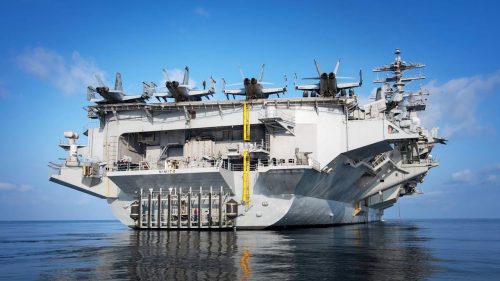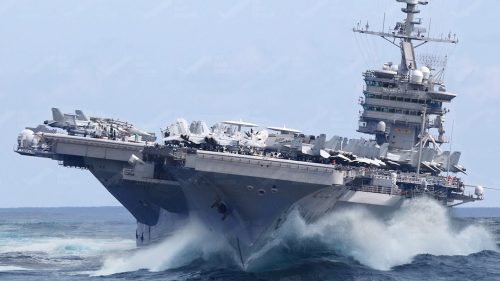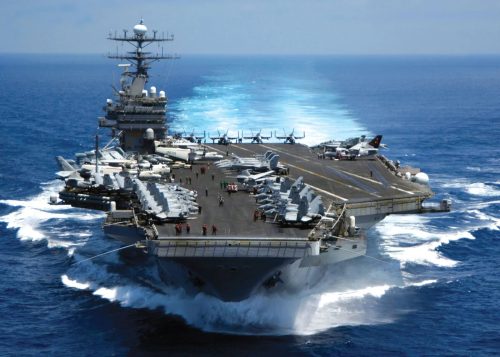When it comes to engineering marvels, few can rival the awe-inspiring grandeur of the world’s largest aircraft carrier. This $13 billion behemoth is a true testament to human innovation and the pinnacle of naval engineering.

In this article, we embark on a journey deep into the heart of this colossal vessel, unveiling its impressive features and shedding light on the technology and logistics behind its construction. Join us as we dive into the $13 billion epic that is the world’s largest aircraft carrier.
The Genesis of a Colossal Project
Before we delve into the details, it’s essential to understand the origins of this colossal project. The construction of the world’s largest aircraft carrier began over a decade ago, with the aim of modernizing naval capabilities and ensuring global security. The sheer scale of the undertaking is mind-boggling, involving thousands of skilled engineers, technicians, and workers.
A Floating Fortress: Dimensions and Capacity
This mammoth carrier stretches over 1,000 feet in length, making it longer than the Eiffel Tower is tall. Its sheer size allows it to accommodate a staggering number of aircraft, troops, and equipment. With a flight deck that spans over 4 acres, it can launch and recover multiple aircraft simultaneously, ranging from fighter jets to reconnaissance planes and helicopters.

Advanced Technology at Sea
The technological marvels on board are equally impressive. Cutting-edge radar and sonar systems provide unparalleled situational awareness, ensuring the carrier’s protection from threats near and far. Advanced propulsion systems, including nuclear power, give it the ability to travel great distances without refueling, making it a true global force.
Logistical Marvel: Supplying the Giant
Supplying this floating city is a logistical challenge of epic proportions. With a crew of thousands and the need for constant maintenance, this aircraft carrier requires a small army of support vessels, including supply ships and submarines, to keep it operational. The logistics behind this operation are nothing short of extraordinary.
The Future of Naval Power
As we explore the $13 billion epic that is the world’s largest aircraft carrier, it becomes evident that this floating fortress represents the future of naval power projection. Its versatility, size, and advanced technology ensure it plays a crucial role in safeguarding nations and maintaining global stability.
Conclusion

In conclusion, the world’s largest aircraft carrier is more than just a vessel; it’s a symbol of human ingenuity and the relentless pursuit of excellence in engineering.
With its immense size, advanced technology, and strategic importance, it stands as a testament to what is possible when science and innovation come together. As we continue to journey through this $13 billion epic, we gain a deeper appreciation for the incredible achievements of modern naval engineering.
